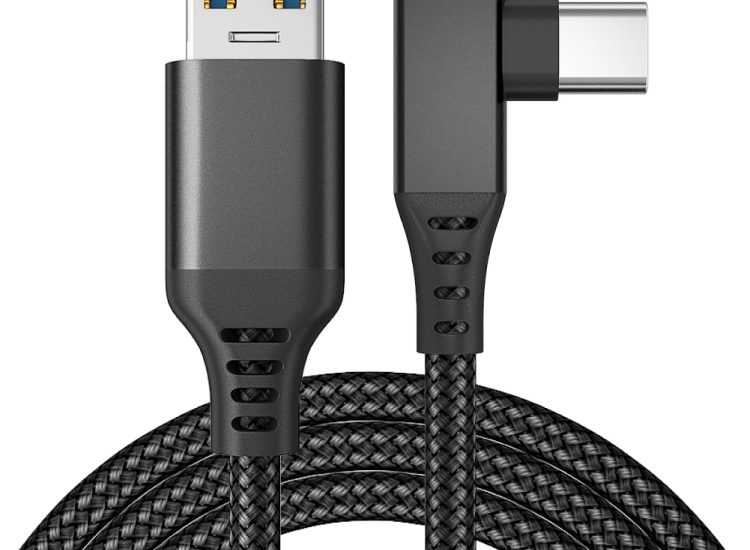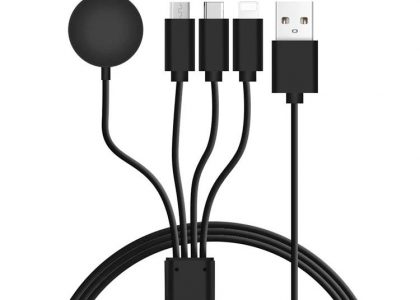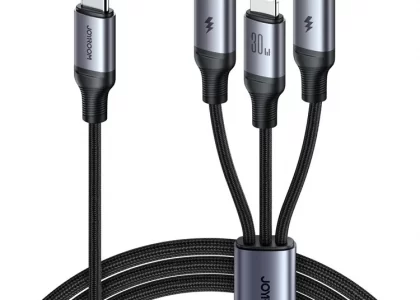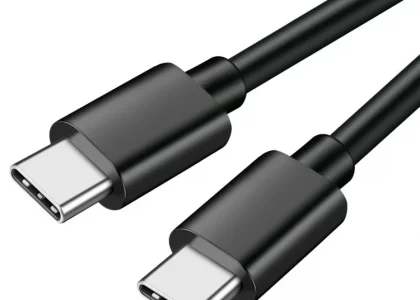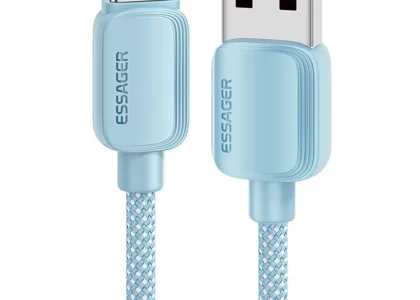In the age of digital devices, the importance of reliable charging and data transfer cables cannot be overstated. Whether you’re syncing data, charging your smartphone, or connecting various gadgets, having the right cable is crucial. Today, we’ll explore three of the most commonly used cables: USB Type-C to USB-A cables, USB Type-C cables, and Lightning cables. Understanding the key features and applications of each will help you make the best choice for your needs.
USB Type-C to USB-A Cable: Bridging Generations of Technology
USB Type-C to USB-A cable are indispensable for connecting newer devices equipped with USB-C ports to older USB-A ports. This type of cable is widely used for:
Charging New Devices with Older Chargers: Many older chargers, laptops, and other devices have USB-A ports. With a USB Type-C to USB-A cable, you can connect these older chargers to your modern gadgets like smartphones, tablets, and laptops that have USB-C ports.
Data Transfer Between Devices: This cable allows for the transfer of data between devices with different port types, such as a USB-C smartphone and a USB-A computer. It’s a great solution for syncing photos, music, or other files between devices without needing adapters.
Universal Compatibility: USB Type-C to USB-A cables are compatible with a wide range of devices, making them a versatile addition to your tech accessories. From charging your phone to connecting external drives, this cable type is a handy tool to keep in your bag.
While these cables offer broad compatibility, they may not always provide the fastest charging speeds compared to newer USB-C connections. However, for general usage, they are highly reliable and accessible.
USB Type-C Cable: The Modern Standard
USB Type-C cables are quickly becoming the standard for a wide range of devices, from smartphones and tablets to laptops and gaming consoles. Here’s why they are essential:
High-Speed Data Transfer and Fast Charging: USB Type-C cables are known for their ability to support high-speed data transfer and fast charging. This makes them ideal for powering up your devices quickly and efficiently, and for transferring large files, such as videos or high-resolution images.
Reversible Connector: One of the most convenient features of USB Type-C is its reversible design, which means you can plug it in either way without fumbling to find the correct orientation. This simple but effective feature has made USB-C the preferred choice for many new devices.
Future-Proof Technology: As more devices adopt USB-C, investing in USB Type-C cables ensures that you’re prepared for the future of tech. Whether it’s a new phone, laptop, or accessory, chances are it will be USB-C compatible.
Versatility: USB Type-C cables can handle power delivery, data transfer, audio, and video output, making them extremely versatile. They can connect to a variety of peripherals, including monitors, external storage devices, and more.
USB Type-C cables represent the cutting edge of cable technology, offering speed, convenience, and a wide range of uses that make them an essential accessory for any tech-savvy individual.
Lightning Cable: The Apple Essential
For Apple users, Lightning cables are a must-have accessory. Designed exclusively for Apple devices, these cables are used for:
Charging and Syncing iPhones, iPads, and iPods: Lightning cables are the standard charging and data transfer cable for a variety of Apple products. They provide a reliable connection for charging your device and syncing data with your computer.
Compact and Convenient: Lightning cables are compact and easy to carry, making them perfect for travel or daily use. They are also designed with a durable, sturdy connector that fits securely into Apple devices.
Wide Range of Accessories: From charging docks to car chargers, there is a broad ecosystem of accessories that utilize Lightning cables. This makes them incredibly versatile for Apple users who want to expand the functionality of their devices.
MFi Certification: Apple’s MFi (Made for iPhone/iPad) certification ensures that Lightning cables meet Apple’s standards for quality and compatibility. This certification is important when choosing third-party Lightning cables, as it guarantees they will work properly with your Apple devices.
While Lightning cables are primarily for Apple devices, their reliability and performance make them a staple for any Apple user. Whether you’re charging your iPhone or transferring files to your iPad, Lightning cables offer a seamless experience.
Conclusion
In a world filled with various devices and charging needs, understanding the differences and benefits of USB Type-C to USB-A cables, USB Type-C cables, and Lightning cables can help you choose the right tool for the job. Whether you’re connecting new devices to old ports, enjoying the speed and convenience of USB-C, or relying on Lightning cables for your Apple products, having the right cables ensures you stay powered and connected. Invest in quality cables to maximize the performance and longevity of your devices, and keep your tech running smoothly every day.


